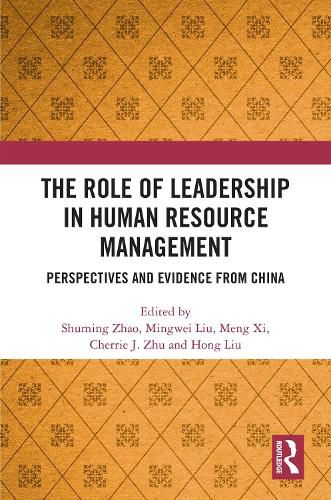Readings Newsletter
Become a Readings Member to make your shopping experience even easier.
Sign in or sign up for free!
You’re not far away from qualifying for FREE standard shipping within Australia
You’ve qualified for FREE standard shipping within Australia
The cart is loading…






This book underscores the crucial link between leadership and human resource management (HRM) and their collective impact on organizational outcomes. It highlights the need for integrating research in both fields to fully understand their effects at organizational, team, and individual levels. The interaction between leadership and HRM, which can either complement or substitute for one another, is beginning to be explored in recent studies. Specifically, the book points out the relevance of cultural, institutional, and historical contexts in the Asia Pacific, particularly in China, where Western models may not capture the unique aspects of leadership and HRM. It discusses the significance of paternalistic leadership and specific HRM practices in China, emphasizing their implications for performance.
The book argues for the importance of examining these interactions comprehensively, suggesting that a combined study of leadership and HRM, across different levels and contexts, presents valuable research avenues. The twelve chapters in this volume offers insights into leadership and HRM in China, showcasing a variety of leadership behaviours and HRM practices.
The chapters in this book were originally published as a special issue of Asia Pacific Business Review.
$9.00 standard shipping within Australia
FREE standard shipping within Australia for orders over $100.00
Express & International shipping calculated at checkout
This book underscores the crucial link between leadership and human resource management (HRM) and their collective impact on organizational outcomes. It highlights the need for integrating research in both fields to fully understand their effects at organizational, team, and individual levels. The interaction between leadership and HRM, which can either complement or substitute for one another, is beginning to be explored in recent studies. Specifically, the book points out the relevance of cultural, institutional, and historical contexts in the Asia Pacific, particularly in China, where Western models may not capture the unique aspects of leadership and HRM. It discusses the significance of paternalistic leadership and specific HRM practices in China, emphasizing their implications for performance.
The book argues for the importance of examining these interactions comprehensively, suggesting that a combined study of leadership and HRM, across different levels and contexts, presents valuable research avenues. The twelve chapters in this volume offers insights into leadership and HRM in China, showcasing a variety of leadership behaviours and HRM practices.
The chapters in this book were originally published as a special issue of Asia Pacific Business Review.